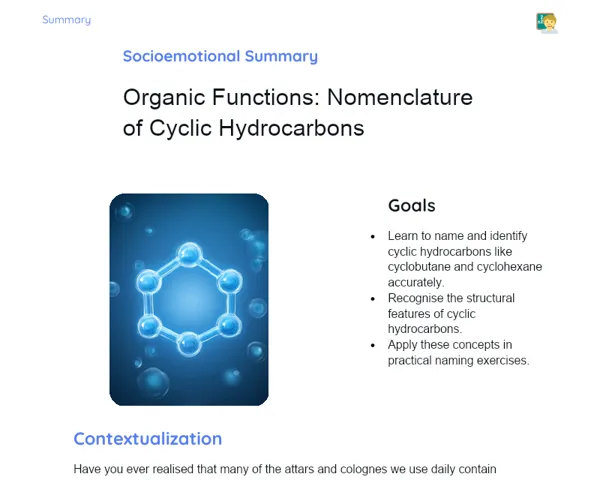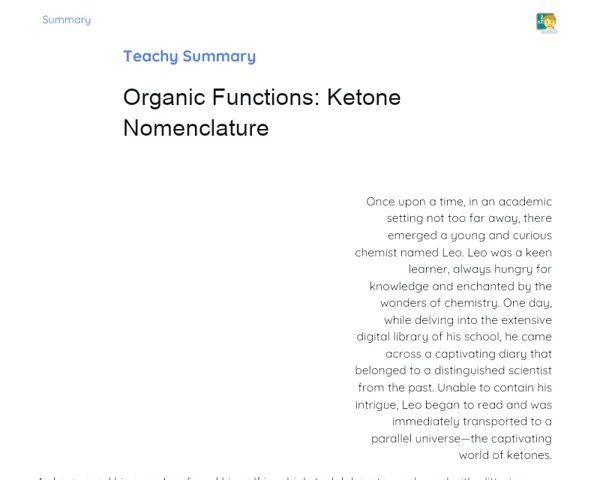Summary Tradisional | Chemical Equilibrium
Contextualization
Chemical equilibrium is a fundamental concept in chemistry that illustrates a state where the concentrations of reactants and products in a chemical reaction remain unchanged over time. This balance is achieved when the rates of the forward and reverse reactions equal each other, creating a dynamic equilibrium where reactions continue simultaneously without altering the concentrations of the involved substances. Understanding this concept is essential for grasping how many chemical reactions function in closed systems, and it enables us to predict and manage the behaviour of these reactions under varying conditions.
In reversible reactions, reactants convert to products, while products simultaneously revert to reactants. We reach the equilibrium point when these two processes occur at an equal rate. Grasping chemical equilibrium is vital in numerous real-world applications, like the chemical industry, where optimising the production of valuable products, such as ammonia through the Haber process, relies on precisely managing reaction conditions to sustain a suitable equilibrium. Moreover, critical biological processes, including cellular respiration, also depend on chemical equilibrium, underscoring its significance in both industrial and biological settings.
To Remember!
Concept of Chemical Equilibrium
Chemical equilibrium arises when the rate of the forward reaction is equivalent to that of the reverse reaction, leading to stable concentrations of reactants and products. It's crucial to understand that this equilibrium state does not imply that reactions have ceased; rather, they continue at equal rates, keeping concentrations constant. This condition is referred to as dynamic equilibrium.
To grasp chemical equilibrium, one must comprehend reversible reactions, wherein reactants change into products, and products can revert back to reactants. The equilibrium point is established when these transformations take place at the same velocity. This concept is applicable across various chemical reactions, whether in laboratories or in industrial and biological applications.
Chemical equilibrium is essential for a range of practical uses. In the chemical industry, managing equilibrium is key to maximising the yield of desired products. In biology, numerous vital processes, such as cellular respiration, rely on chemical equilibrium for their proper functioning.
-
Chemical equilibrium represents a dynamic state.
-
Concentrations of reactants and products remain unchanged.
-
The concept is applicable to reversible reactions.
Law of Mass Action
The Law of Mass Action, introduced by Guldberg and Waage, posits that for a reaction at equilibrium, the ratio of the concentrations of products to reactants, raised to the power of their respective stoichiometric coefficients, remains constant. This constant is termed the equilibrium constant (Kc). The expression for Kc for a generic reaction aA + bB ⇌ cC + dD is defined as Kc = [C]^c [D]^d / [A]^a [B]^b.
Understanding the Law of Mass Action is fundamental for analysing and calculating chemical equilibrium. By knowing the concentrations of reactants and products at equilibrium, we can find the reaction's equilibrium constant. This constant indicates how far along the reaction is towards forming products or reverting to reactants.
Kc is unique to each reaction and varies with temperature. Different values of Kc (Kc > 1, Kc < 1, and Kc ≈ 1) reveal whether the reaction leans towards producing products or reverting to reactants. This insight is critical for optimising chemical reactions in diverse situations, including within the chemical industry and biological processes.
-
The Law of Mass Action defines the relationship between reactant and product concentrations.
-
The equilibrium constant (Kc) is unique to each reaction.
-
Kc is influenced by temperature and indicates the reaction's favourability.
Equilibrium Constant (Kc)
The equilibrium constant (Kc) is a numerical value that communicates the ratio of the products' concentrations to the reactants' concentrations at equilibrium, adhering to the Law of Mass Action. For a generic reaction aA + bB ⇌ cC + dD, Kc is articulated as Kc = [C]^c [D]^d / [A]^a [B]^b. This constant aids in forecasting the reaction's direction and the equilibrium position.
To calculate Kc, one must substitute the reactants’ and products’ concentrations into the equilibrium constant equation. This value helps ascertain whether a specific reaction favours product formation or predominantly leans towards reactants. A Kc greater than 1 indicates a preference for products, whereas a Kc less than 1 suggests a favour towards reactants.
Understanding Kc’s implications is vital for practical applications. In industrial scenarios, knowing Kc assists in tweaking reaction conditions to maximise output. In biological contexts, the equilibrium constant is essential for comprehending metabolic and physiological processes that are reliant on balanced chemical reactions.
-
Kc signifies the relationship between product and reactant concentrations at equilibrium.
-
Determining Kc involves plugging concentrations into the equilibrium constant formula.
-
Kc illustrates whether the reaction favours products or reactants.
Factors Affecting Chemical Equilibrium
Chemical equilibrium can be influenced by various factors, such as alterations in concentration, temperature, and pressure. According to Le Chatelier's principle, when a system at equilibrium experiences a disruption due to changes in these conditions, it will adjust its equilibrium to counteract that disturbance.
A change in the concentration of either reactants or products will shift the equilibrium in a manner that compensates for that alteration. For instance, increasing the concentration of a reactant will push the equilibrium toward the right, promoting product formation. Similarly, reducing the concentration of a product will also shift the equilibrium to the right.
Temperature plays a role too. For exothermic reactions, a rise in temperature shifts the equilibrium towards the left, favouring reactants. Conversely, for endothermic reactions, an increase in temperature shifts the equilibrium to the right, favouring the formation of products. Pressure changes impact the equilibrium of gaseous reactions, where an increase in pressure typically shifts the equilibrium towards the side with fewer gas molecules.
-
Equilibrium is influenced by concentration, temperature, and pressure fluctuations.
-
Le Chatelier's principle asserts that the system respond to disturbances to restore balance.
-
Temperature and pressure exhibit distinct impacts on exothermic and endothermic reactions.
Key Terms
-
Chemical Equilibrium: A condition where the concentrations of reactants and products remain stable.
-
Law of Mass Action: A principle outlining the relationship between reactant and product concentrations at equilibrium.
-
Equilibrium Constant (Kc): A value reflecting the ratio between product and reactant concentrations at equilibrium.
-
Le Chatelier's Principle: The system's response to changes in concentration, temperature, and pressure to restore balance.
-
Reversible Reactions: Reactions where reactants convert into products and vice versa.
-
Exothermic Reactions: Reactions that generate heat.
-
Endothermic Reactions: Reactions that absorb heat.
Important Conclusions
The concept of chemical equilibrium is vital for comprehending how chemical reactions behave under varied conditions. In this lesson, we examined how equilibrium is established and sustained, bringing to light the significance of reversible reactions and the dynamic nature of equilibrium. The Law of Mass Action laid the groundwork for calculating the equilibrium constant (Kc), enabling us to predict the reaction's direction and assess whether it favours products or reactants.
We also discussed factors such as concentration, temperature, and pressure, which can affect chemical equilibrium based on Le Chatelier's principle. Understanding these aspects is crucial for managing chemical reactions in both industrial and biological settings, ensuring process efficiency and safety. Practical examples, such as ammonia synthesis and acid dissociation, bolstered our theoretical understanding.
The knowledge gained regarding chemical equilibrium holds significant practical applications across various fields, including chemistry, industry, and biology. We encourage students to delve deeper into this topic, as a thorough understanding of chemical equilibrium can enhance practices in industrial production and foster advancements in scientific exploration. Continued study will facilitate more effective applications of these principles in real-world scenarios.
Study Tips
-
Review the practical examples discussed in class and attempt additional problems to reinforce your understanding of calculating the equilibrium constant (Kc).
-
Study Le Chatelier's principle and complete exercises concerning different scenarios involving changes in concentration, temperature, and pressure to foresee equilibrium adjustments.
-
Explore further articles and resources on the applications of chemical equilibrium in industrial and biological processes to bridge theory with practical application.



